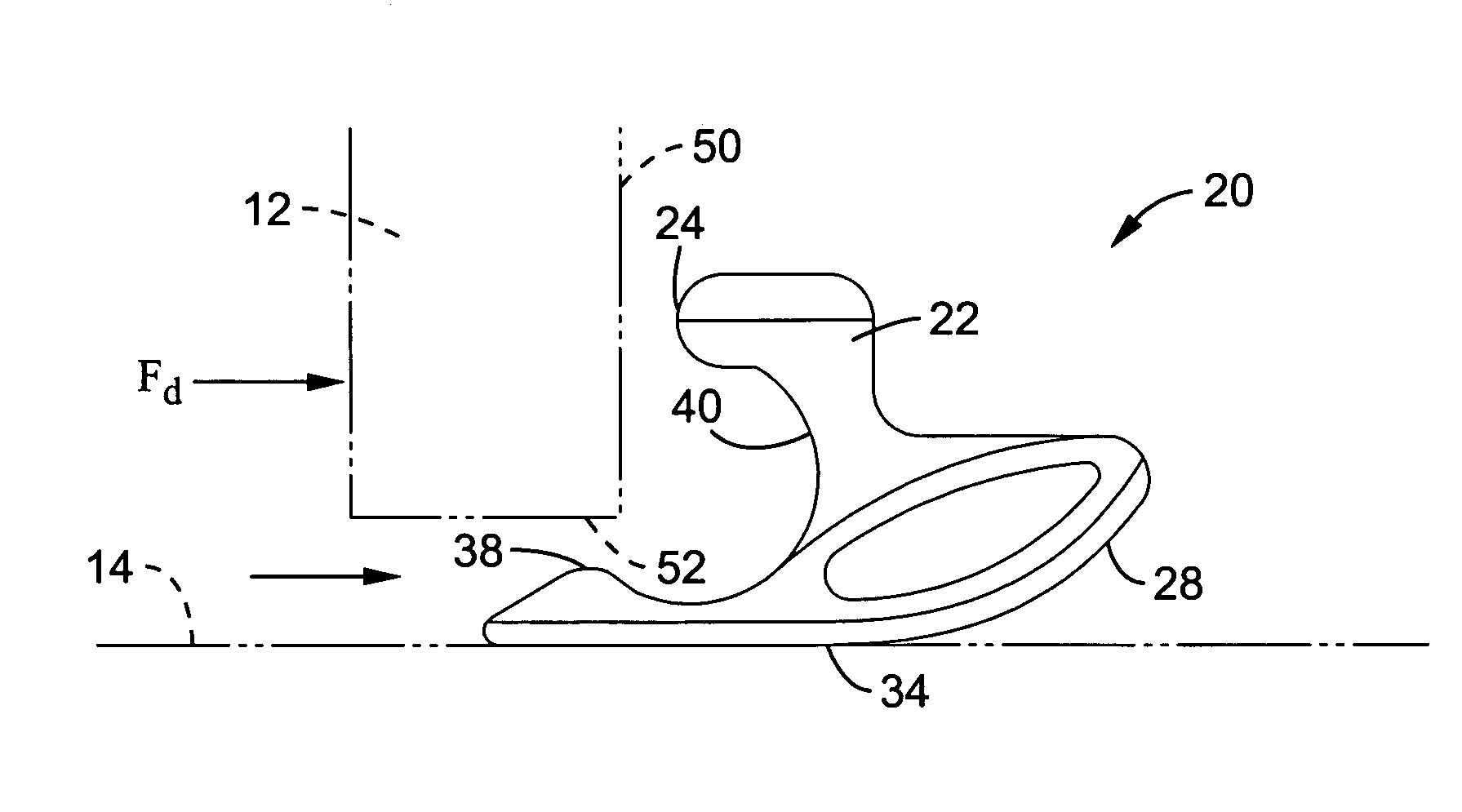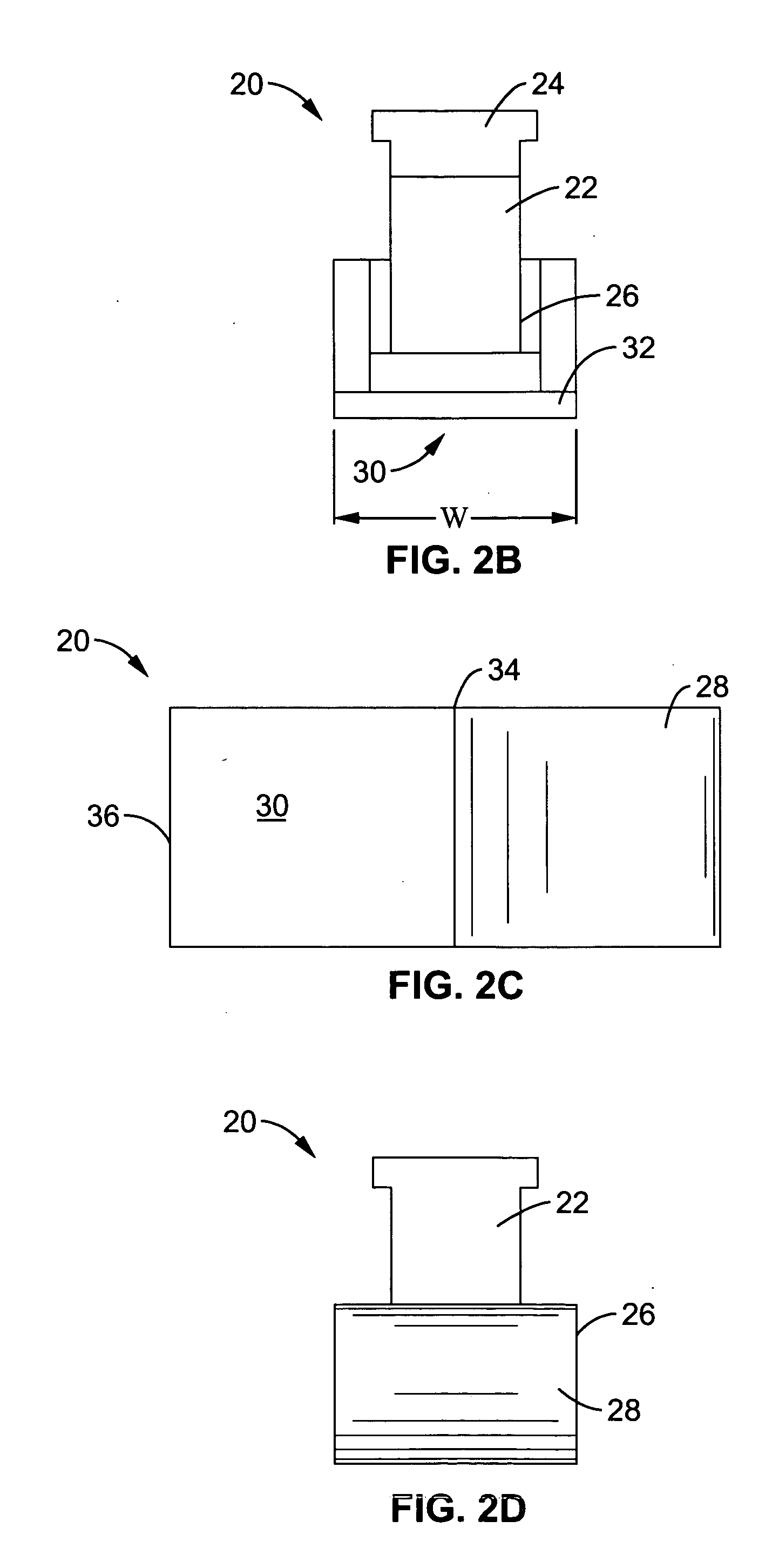Rocking doorstop
a door stop and rocking technology, applied in the field of door stops, can solve the problems of ineffective procedure, insufficient static frictional force f/sub>s to withstand load, and numerous drawbacks of the conventional wedge-type door stop that is commonly available in the ar
- Summary
- Abstract
- Description
- Claims
- Application Information
AI Technical Summary
Benefits of technology
Problems solved by technology
Method used
Image
Examples
Embodiment Construction
[0063] Referring more specifically to the drawings, for illustrative purposes the present invention is embodied in the apparatus generally shown in FIG. 2A through FIG. 13C. It will be appreciated that the apparatus may vary as to configuration and as to details of the parts, and that the method may vary as to the specific steps and sequence, without departing from the basic concepts as disclosed herein.
[0064] Referring to FIGS. 2A-D, a rocking doorstop 20 in accordance with the present invention is shown in side, front, bottom and rear views, respectively. Doorstop 20 has a body section 26 supporting lower arm 36 and upper arm 22. Arms 36 and 22 have contact points 38 and 24 respectively. Contact points 38 and 24 are separated by a curvilinear cutout 40 having an internal radius Ri defining an opening having gap dimension G. The internal radius Ri of curvilinear cutout 40 allows clearance of door 12 as shown in FIG. 3A-C.
[0065] Body section 26 and arm 36 integrally form lower sur...
PUM
 Login to View More
Login to View More Abstract
Description
Claims
Application Information
 Login to View More
Login to View More - R&D
- Intellectual Property
- Life Sciences
- Materials
- Tech Scout
- Unparalleled Data Quality
- Higher Quality Content
- 60% Fewer Hallucinations
Browse by: Latest US Patents, China's latest patents, Technical Efficacy Thesaurus, Application Domain, Technology Topic, Popular Technical Reports.
© 2025 PatSnap. All rights reserved.Legal|Privacy policy|Modern Slavery Act Transparency Statement|Sitemap|About US| Contact US: help@patsnap.com



